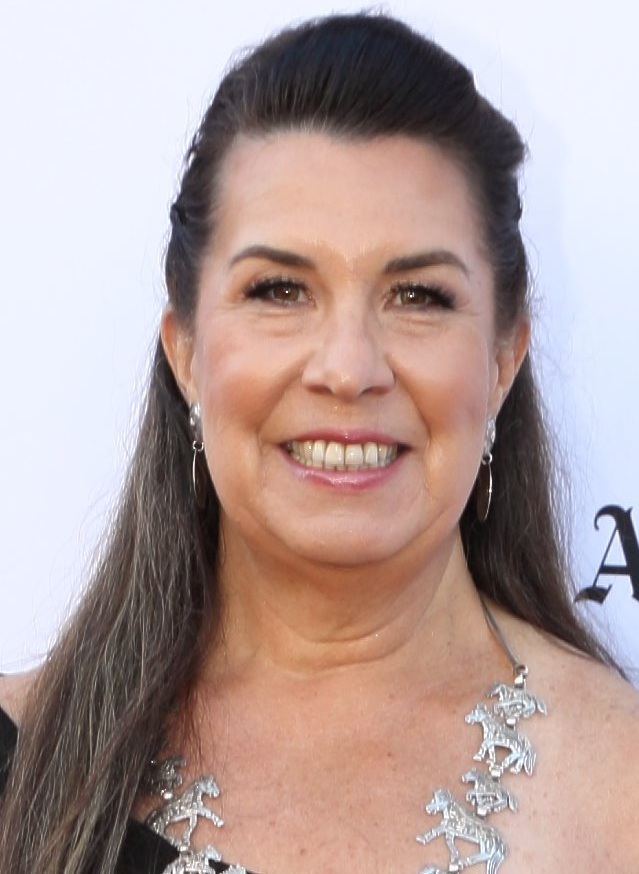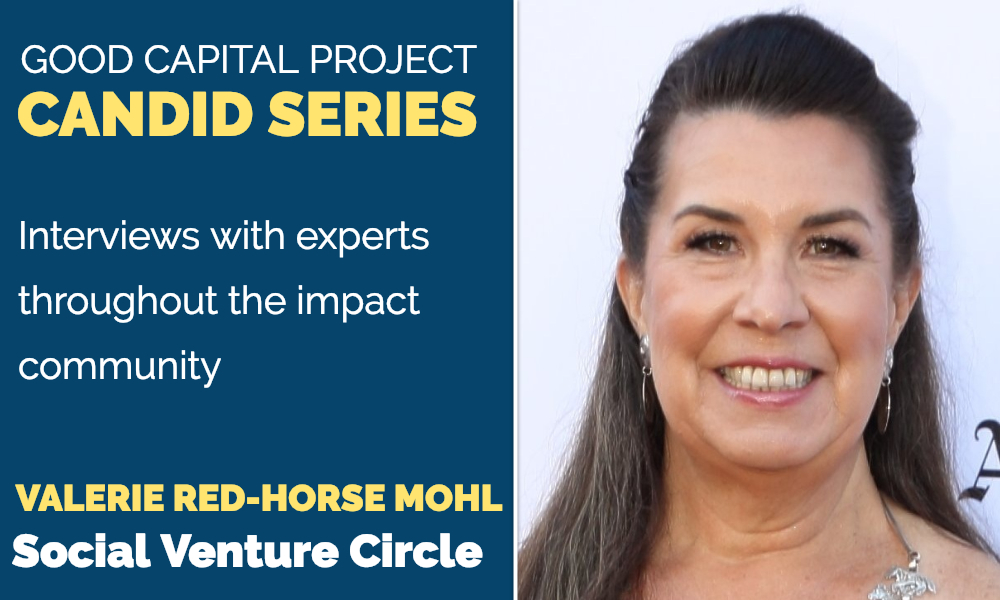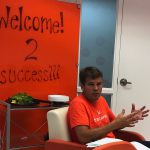
Valerie Red-Horse Mohl is the Executive Director of Social Venture Circle. She founded two female Native American-Owned investment banks on Wall Street, specializing in sovereign finance and tribal nations. Valerie also founded nonprofit organizations that focus on women and youth empowerment, and she has produced and directed documentary films that raise social justice, civil rights, and women’s rights awareness.
Good Capital Project: Your journey to impact is an incredibly interesting story. Would you tell us more about your personal and professional history in this space?
Valerie Red-Horse Mohl: At 13 years old, I saw a film called “Scared Straight”. There were kids in my middle school who were heavily into drug use. Nothing the school did worked to deter them from drugs until they saw this movie. The impact it had on my peers defined my life journey and inspired me to go into film making. Regardless of what I wanted to accomplish, it seemed like cinema had the ability to capture emotions and incite a different way of thinking. I started a film production company and became involved in finance through a job I worked in college for a top investment bank. I learned about leveraged finance, financing casinos, and eventually started my own investment bank on Wall Street.
My goal, first and foremost, is to support people. Throughout my careers, I saw the poverty epidemic on reservations which inspired me to start ministries at my church focusing on alleviating poverty, drug addiction, bringing food, and weather-proofing homes so people won’t freeze to death in the winter. Looking back, I realized I was working in impact within different silos – my work with non-profit ministries, economic development, and producing documentary films highlighting stories in underserved communities. When I moved to Northern California, I became involved in an impact community that encouraged me to interview for the Executive Director position at Social Venture Circle (SVC). In this role, I’m able to help build on the impact they have been creating for decades, which is more than I would be able to do as an individual or if I stayed in the tribal space.
GCP: How will your experience owning your own financial firm inform your perspective at SVC? Specifically, in regard to the intersection of impact and finance and bringing, as you said, all your silos together?
VRHM: There are a couple of different ways. I do not hail from the non-profit space, nor have I had years of experience with Investors’ Circle (IC) and Social Venture Network (the two organizations that merged to create SVC). When someone’s been with an organization for a while, change can be difficult. However, I am able to start with a fresh viewpoint and an impartial perspective based on my experience.
I also have several securities licenses and have experience working with clients using an integrated capital approach. For example, I would help determine a combination of equity and debt and government incentives to achieve the most optimal structure of finance for the tribal client. My finance background is important when impact investors want to explore different types of term sheets, financial deals, and structures so the equity portion can be less extractive. In the impact non-profit space, there are many people who have experience with field building, sourcing grants, and working with foundations, which is extremely important. But to also understand financial structures incorporates a different perspective that is equally important.
GCP: Investors’ Circle and Social Venture Network are individually well-known as pioneers in impact investing and social entrepreneurship. How have the priorities of each company influenced the current priorities of Social Venture Circle? What are your strengths as a combined entity?
VRHM: Social Venture Network has been in the social impact and non-profit space for a long time. They are a national organization whose mission is to ‘lead the way’ in social impact. They have been a part of this story for a long time by leading the narrative and supporting companies who have become all-stars in this space.
Investors’ Circle branched out of Social Venture Network with a direct focus on facilitating early-stage capital, such as angel investments, into early stage impact entrepreneurs. Early stage capital like this is difficult to find, so it made sense to have an organization focused on helping with that. They host pitch events, like Beyond the Pitch, and their basic purpose is to bring investors together with impact entrepreneurs. They facilitate that meeting space and support for combined due diligence, deal flow, and supporting investors who are new in the impact space.
As we’ve merged together, we have strong local markets from Investors’ Circle and membership networks from throughout the country from Social Venture Network. Now we have the benefits of being a large national network that can serve in various regions around the country. At a recent pitch, we had an investor who was able to provide a portion of the investment needed to fund an organic foods company. Using our network, the investor was able to reach out to different investors to provide the rest of the funding needed to get the deal done. Our strength as a merged entity is having a sense of local community with the advantages of a national network regarding peer-to-peer, investor, and national networking. We’re able to offer the best of both worlds.
GCP: What does the future of Social Venture Circle look like? What are your goals during this first year and major priorities over the next 10 years?
VRHM: In the non-profit and social impact space, we focus on supporting and empowering businesses with profit and purpose. Our goals relate to the way we support our membership companies and their networks of entrepreneurs, investors, service providers, thought leaders, and educators. This upcoming year we will be focused on our corporate supply chain initiative, which supports our portfolio companies’ relationships with bigger corporations and everything that might entail regarding the supply chain. We will also focus on introducing our companies, increasing the flow of capital between true impact companies and investors, and assisting with any related services.
One of our major goals in the next ten years is to collaborate with other entities and become cohesive in the impact space. Well known social impact organizations, such as B Corporation and the American Sustainable Business Council, spun out of SVN to focus on specific aspects of this field. BALLE focuses on local markets, Net Impact predominantly provides education at business-school level, and Opportunity Collaboration convenes around the alleviation of poverty. If we want to work with different industries to make a difference outside our own echo chamber, we need to be aligned in our understanding of impact and sustainable investing. Working together in partnership is crucial.
GCP: Can you share a few examples of social enterprises that emerged from the folds of SVC and have now matured into successful businesses while retaining the ethos of their early days?
VRHM: There are early stage companies funded by Investors’ Circle, such as Zipcar and Honest Tea, that have grown. Some of the largest companies in the world right now came through Social Ventures Network. My person favorite is the Ben and Jerry’s story because they are a very recognizable brand known for their ice-cream, organic products, and biodegradable materials. In my opinion, that’s only part of their story.
At one point in their journey, they were primarily socially responsible by focusing on their footprint, organic ingredients and green technology. Then they partnered with Greyston Bakery goods and created real impact by hiring people who were formerly incarcerated or in rehab, which is when they moved to social impact. Ben and Jerry’s even went so far as turning down offers to buy out the company because, until Unilever, other entities would not commit to maintaining the impact model. Their journey inspired other companies to adopt sustainability models, The same can be said for many other companies who came out of SVC, for example, Eileen Fisher has helped the fashion industry through the journey of fair-trade and clothing. Each company has an incredible story and we’re very proud to be part of their journey.




